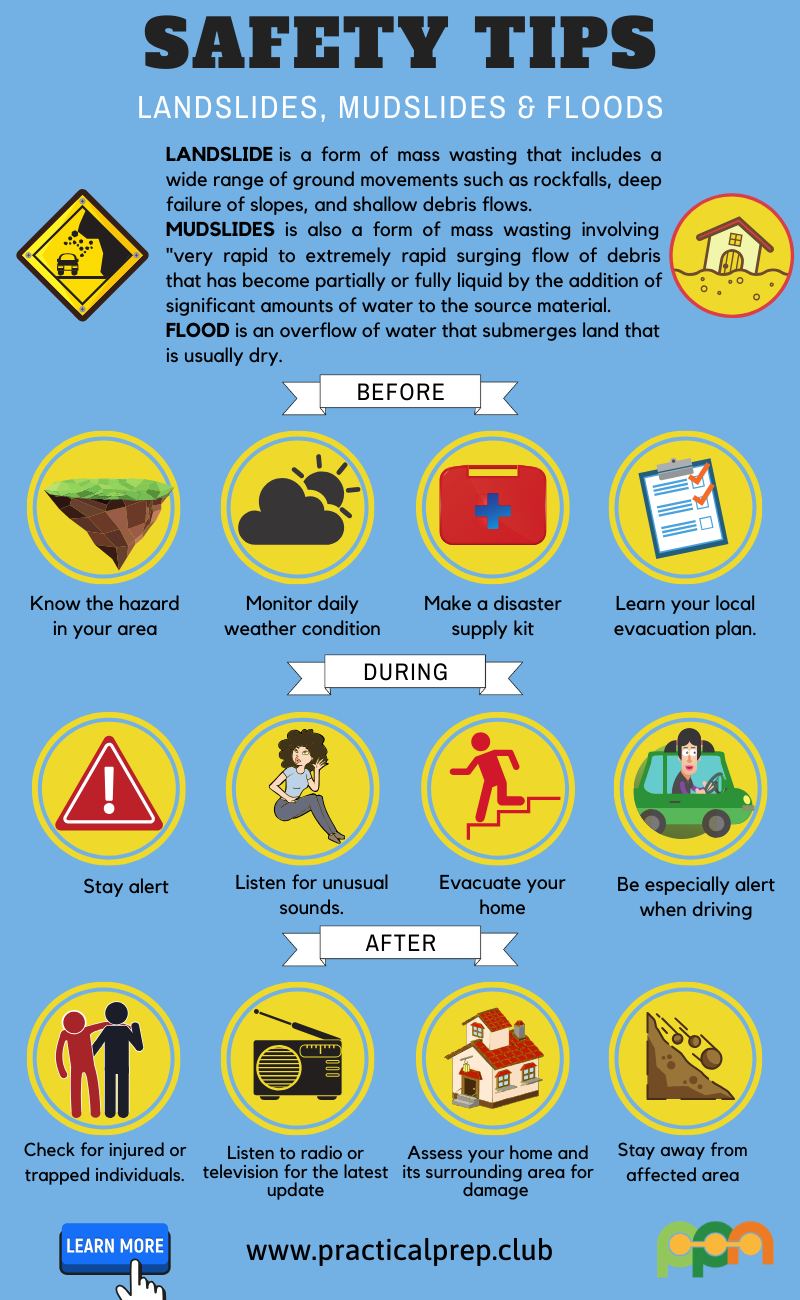Surviving A Flash Flood Emergency: Preparedness And Response Strategies

Table of Contents
Pre-Flood Preparedness: Building Your Resilience
Proactive planning is key to surviving a flash flood. This includes identifying your risk level, creating a comprehensive emergency plan, and assembling a well-stocked emergency kit. Living in a flood-prone area requires extra vigilance and preparation. Even if you don't think you're at high risk, it's wise to be prepared for unexpected weather events. A solid flood preparedness plan should be a part of every household's emergency strategy.
- Develop a family communication plan. Establish a primary and secondary contact person outside your immediate area. Designate a meeting place in case family members are separated during the emergency.
- Identify safe evacuation routes and designated meeting points. Know the quickest and safest routes to higher ground and predetermined locations where you can reunite with family members. Map these routes out in advance.
- Create a comprehensive emergency kit including: water (one gallon per person per day for at least three days), non-perishable food, first-aid supplies, medications, flashlights, extra batteries, a battery-powered or hand-crank radio, copies of important documents (identification, insurance policies), and extra cash.
- Purchase flood insurance if you live in a high-risk area. Flood insurance is often not covered under standard homeowner's insurance policies. Check with your insurance provider to determine your coverage.
- Elevate valuable items and appliances. Move important documents, electronics, and furniture to upper floors or elevated positions to protect them from rising waters.
- Learn the warning signs of flash floods. Be aware of the indicators discussed in the next section.
- Sign up for emergency alerts from your local authorities. Register for weather alerts, emergency notifications, and local warning systems via text, email, or mobile app.
Recognizing Flash Flood Warning Signs: Early Detection is Key
Recognizing the signs of an impending flash flood can provide precious time to react and take safety precautions. Stay informed about weather forecasts and heed official warnings. Understanding the difference between a flood watch and a flood warning is crucial.
- Pay close attention to weather reports and alerts. Monitor weather forecasts closely, especially during periods of heavy rainfall or thunderstorms.
- Look for signs of rapidly rising water levels in streams, rivers, and low-lying areas. A sudden increase in water flow is a clear warning sign.
- Be aware of heavy rainfall and sudden increases in water flow. Even seemingly small streams can become raging torrents during a flash flood.
- Note any unusual sounds, such as rushing water or roaring. These sounds indicate a significant increase in water volume and potential danger.
Understanding Flood Watches and Warnings
A flood watch means that conditions are favorable for flooding to occur. Stay informed and be prepared to take action if necessary. A flood warning, however, means that flooding is already occurring or is imminent. You should take immediate action to protect yourself and your property. The difference is crucial: a watch is a possibility, a warning is an immediate threat requiring immediate action.
During a Flash Flood: Immediate Actions to Take
During a flash flood, your primary goal is to reach safety quickly and efficiently. This might involve evacuating your home or finding higher ground. Remember, your life is more valuable than any property.
- Move to higher ground immediately. Do not attempt to drive through flooded areas; even a few inches of water can sweep a car away.
- If trapped, seek refuge on the roof or the highest level of your building. Signal for help if possible.
- Contact emergency services if you need assistance. Call your local emergency number immediately.
- Avoid downed power lines and debris. These can be extremely dangerous and should be avoided at all costs.
- Stay informed about the situation through weather reports and official channels. Continue to monitor updates to know when it is safe to return.
Post-Flood Recovery: Safe Return and Long-Term Strategies
After the floodwaters recede, there are crucial steps to take to ensure safety and begin the recovery process. This includes assessing damage, cleaning up safely, and taking steps to mitigate future flood risks.
- Wait for official clearance before returning to your home. Authorities will assess the structural integrity of buildings and ensure the area is safe.
- Inspect your home for structural damage and potential hazards. Look for cracks, weakened foundations, and electrical hazards. Contact professionals for assessments.
- Use caution when cleaning up debris and floodwater. Floodwater is often contaminated and can contain hazardous materials. Wear protective gear.
- Contact your insurance company to report damages. Document all damage with photos and videos for insurance claims.
- Consider flood mitigation strategies to protect your property in the future. This might include installing flood barriers, elevating your home, or improving drainage.
Conclusion
Surviving a flash flood emergency demands preparedness and a swift, decisive response. By following these preparedness and response strategies, you can significantly reduce the risks and protect yourself and your loved ones. Remember, creating a comprehensive flash flood preparedness plan, recognizing warning signs, and taking immediate action when necessary are crucial steps to ensuring your safety. Don't wait for a flash flood to strike—prepare now and learn how to effectively respond to a flash flood emergency to increase your chances of survival. Develop your flash flood survival plan today!

Featured Posts
-
 Exploring The Jenson And The Fw 22 Extended Experience
May 26, 2025
Exploring The Jenson And The Fw 22 Extended Experience
May 26, 2025 -
 Anciens Locaux Rtbf A Liege Reconversion Et Projets Futurs
May 26, 2025
Anciens Locaux Rtbf A Liege Reconversion Et Projets Futurs
May 26, 2025 -
 Nouveau Siege Rtbf Galant Demande L Historique Complet Du Dossier
May 26, 2025
Nouveau Siege Rtbf Galant Demande L Historique Complet Du Dossier
May 26, 2025 -
 Jadwal Detail Moto Gp Argentina 2025 Race Dan Sprint Race Minggu Pagi
May 26, 2025
Jadwal Detail Moto Gp Argentina 2025 Race Dan Sprint Race Minggu Pagi
May 26, 2025 -
 Sinners The Louisiana Horror Movie In Theaters Soon
May 26, 2025
Sinners The Louisiana Horror Movie In Theaters Soon
May 26, 2025
